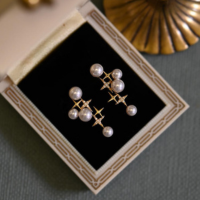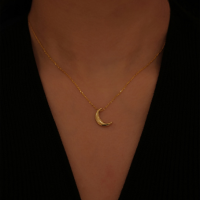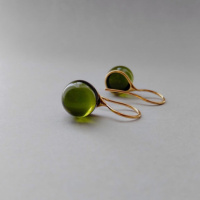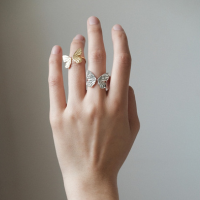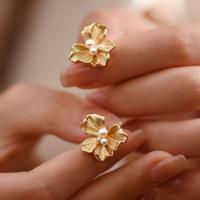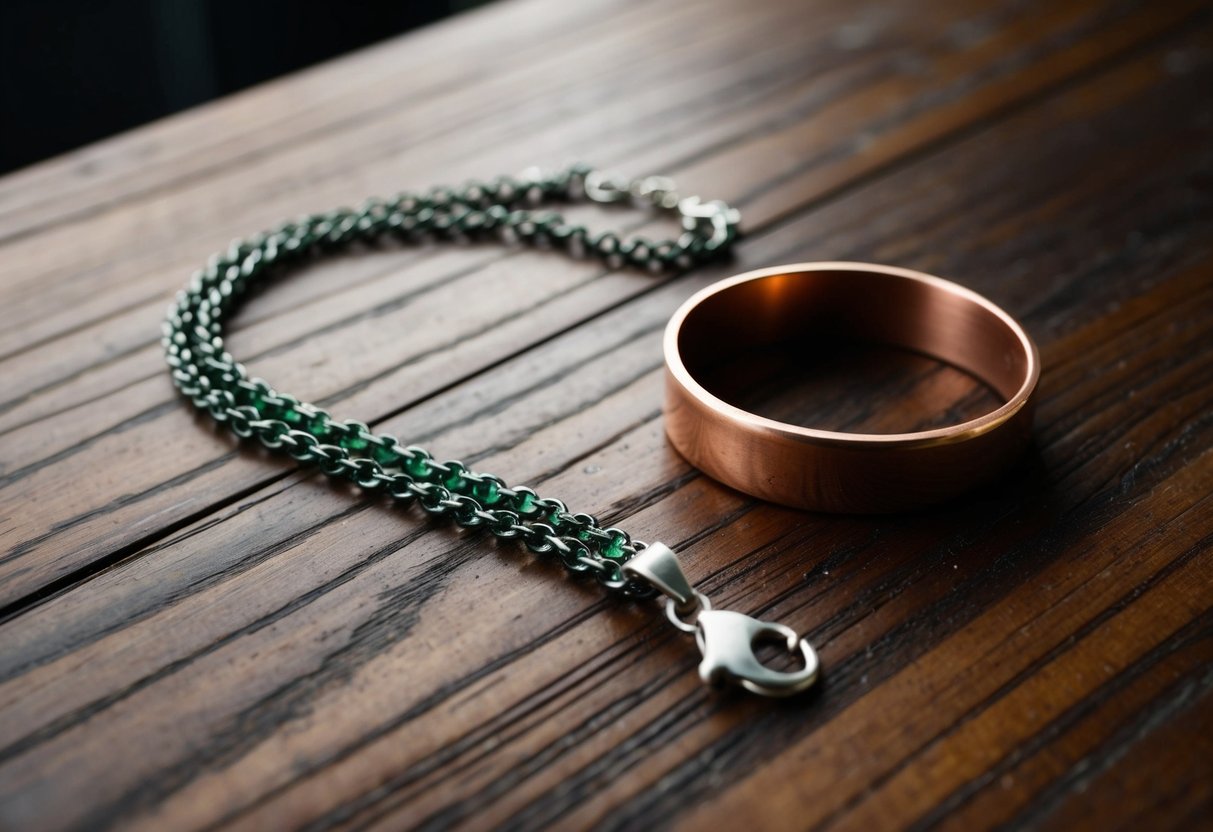
What Jewelry Turns Skin Green
Check out our personalized jewelry collections! (kids drawing jewelry, coin jewelry, wire jewelry, fingerprint jewelry, handwriting jewelry, and more)
Have you ever put on a piece of jewelry and noticed your skin turning green underneath? It might look strange, especially if you love wearing rings, bracelets, or necklaces made from different materials. The green tint is usually caused by a reaction between your skin and the metal in the jewelry.
Not all metals cause this. Copper is the most common metal that reacts with the oils in our skin, which leads to the green stain. This isn't harmful, but it can be annoying if you love wearing that special ring.
There are simple ways to avoid this reaction. From knowing which metals to choose to methods for protecting your jewelry and skin, there are solutions to keep you interested in wearing your favorite pieces without worry.
Key Takeaways
- Copper in jewelry can cause green stains on skin.
- Choosing the right metals helps prevent discoloration.
- Simple care tips can keep jewelry from tarnishing skin.
Understanding Jewelry Materials
Jewelry often causes skin to turn green due to its material composition. Let’s explore the metals and alloys in jewelry that might react with our skin.
Common Alloys and Metals
Many pieces of jewelry are made from metal alloys, which are blends of different metals. Copper, for instance, is a common base metal used in alloys for rings, bracelets, and necklaces. When copper reacts with sweat and natural oils, it can cause a green stain on the skin.
Silver and gold jewelry can also cause skin discoloration. Sterling silver is an alloy that contains about 7.5% copper, making it more durable than pure silver but more likely to cause greening. Gold alloys, especially those below 14k, contain significant amounts of copper or nickel. Nickel allergy is also very common and can cause a rash or green tint on the skin.
We should also consider the role of brass, another copper alloy, which commonly turns skin green due to its high copper content.
Composition of Costume Jewelry
Costume jewelry is often made from non-precious metals designed to mimic more expensive ones. Plated jewelry involves a thin layer of gold or silver covering a base metal like copper or nickel. Once the plating wears off, the base metals can interact with our skin and lead to discoloration.
Another key component is aluminum, often used for its lightweight nature and affordability. It usually doesn’t react with our skin, but when mixed with other metals, it can result in a green hue.
Plastic or glass beads in costume jewelry are safe alternatives. They won’t cause skin reactions but won’t offer the metallic allure that some enjoy. Let’s be mindful of what's in our jewelry to better prevent skin reactions.
Causes of Skin Discoloration
The culprit behind jewelry turning our skin green often lies within the metals used and how they interact with our skin. Specific environmental and personal factors can also accelerate this tarnishing, leading to a change in skin color.
Chemical Reactions with Metal
Metals like copper and nickel are often the main causes of skin discoloration. When jewelry made from these metals gets wet or exposed to air, a chemical reaction occurs. This reaction creates a compound called copper carbonate, which can leave a green stain on our skin.
Gold and silver aren't free from blame either. These metals are often mixed with copper or nickel to enhance durability, and the same reactions can take place. Despite their popularity, nickel especially can lead to skin irritation and allergies, further complicating matters.
Factors Affecting Tarnishing
Several factors can quicken how fast jewelry tarnishes and leaves a mark. Our body chemistry is a primary factor. Sweat and natural oils can speed up the reaction, leading to more discoloration.
Weather can also play a role. Humid and rainy conditions contribute to faster tarnishing because moisture is a factor. In addition, using lotions, perfumes, or other skincare products before wearing jewelry can trap moisture and chemical residues against our skin. This encourages tarnishing and discoloration.
Metals That May Tarnish Skin
When choosing jewelry, knowing which metals might cause skin discoloration is key. Some metals, like copper and nickel, may react and leave a green mark on our skin. Let's explore these in detail.
Copper and Its Alloys
Copper is a popular metal used in jewelry. It’s used alone or combined with other metals like zinc to make brass.
When copper comes into contact with moisture, including sweat, it can oxidize. This reaction forms a green patina on the metal that easily transfers to our skin.
Wearing copper jewelry may result in our skin turning green. It’s harmless, but some people might find it unattractive. If we want to prevent this, we can apply a clear nail polish on the inside of the jewelry or choose pieces with a protective coating.
Silver's Role in Jewelry
Silver, especially sterling silver (92.5% silver), is another metal in jewelry-making. It usually doesn’t turn skin green directly.
However, sterling silver often contains copper. Moisture may cause the copper part to oxidize, leading to the green tint.
High humidity or acidic skin can speed up this process. To minimize this effect, we can regularly clean our silver jewelry using a soft cloth.
Nickel and Skin Sensitivity
Nickel is found in many fashion pieces. It's durable and inexpensive, but it may cause skin issues for some.
About 10-20% of people have a sensitivity or allergy to nickel. This can lead to redness, itchiness, and sometimes a green discoloration.
For those of us who are sensitive, choosing nickel-free jewelry might be necessary. Many brands offer hypoallergenic options made from stainless steel, titanium, or platinum that are safe and stylish.
Preventive Measures and Care Tips
We can keep our jewelry looking beautiful and our skin irritation-free by making smart choices. By focusing on hypoallergenic materials, maintaining our jewelry, and practicing safe wearing habits, we can prevent our skin from turning green.
Selecting Hypoallergenic Materials
When choosing our jewelry, we should opt for hypoallergenic options. Stainless steel, sterling silver, and platinum are excellent choices. These materials typically avoid causing skin reactions.
While gold is usually safe, some gold jewelry contains nickel, which can cause discoloration. Gold with a higher karat rating, like 18K, is less likely to contain nickel. Likewise, titanium is another metal that's unlikely to react with our skin. Choosing these materials can help us avoid any unwanted green marks.
Proper Jewelry Maintenance
Keeping our jewelry clean is crucial. Sweat, oils, and dirt can interact with the metals, causing them to tarnish and discolor our skin.
Simple cleaning routine: Use a soft cloth to gently polish our pieces. Warm water and mild soap can be used for deeper cleaning. Avoid harsh chemicals or abrasive tools since they can damage the jewelry. Consistent maintenance helps keep our adornments shiny and safe to wear.
Best Practices for Wearing Jewelry
When it comes to wearing jewelry, we should take some precautions. First, let’s avoid wearing it while swimming. Chlorine and saltwater can speed up tarnishing.
Remove rings, bracelets, and necklaces when applying creams or lotions. If we know we’ll sweat, like at the gym, it's better to take off our jewelry to prevent reactions. Lastly, storing items properly in a dry, clean place will help them last longer. Using these practices can keep our jewelry and skin in good condition.
Alternatives to Prevent Green Stains
Jewelry that turns our skin green can be frustrating. By considering better metal choices and protective methods, we can avoid these stains.
High-Quality Metal Options
Choosing the right metal is crucial. Stainless steel and titanium are excellent choices. They are both durable and unlikely to cause green stains.
Platinum is another good option, although more expensive. For those who love gold, make sure it's at least 14 karats. Higher karat gold has less copper and is less likely to cause a reaction.
Mixing and matching quality metals can also be stylish while preventing skin stains. Choosing these metals over cheaper alternatives helps us enjoy jewelry without worry.
Protective Coatings and Barriers
Sometimes, coatings can protect our skin from green stains. Clear nail polish is a simple solution. Applying a thin layer on the parts of the jewelry that contact our skin can create a barrier.
Jewelry lacquer is another option. These products are designed to coat and protect jewelry, making them longer-lasting.
Even a layer of base coat can be effective. Additionally, wearing a thin layer of clothing between our skin and jewelry can help. These strategies are easy to apply and let us wear our favorite pieces without staining concerns.
Identifying Quality Jewelry Pieces
When looking for quality jewelry, we should consider hallmarks and trusted brands. Hallmarks show the precious metal content, while reputable brands ensure craftsmanship.
Hallmarks and Stamps
Hallmarks are important markers on jewelry pieces. They tell us about the metal's purity and origin. Gold, silver, and platinum pieces often have them. For example, gold hallmarks might indicate 14K, 18K, or 24K.
Silver jewelry usually has stamps like "925" for sterling silver. It's crucial to spot these to avoid low-quality metals that tarnish easily. We should also look for country stamps, like a lion stamp for British sterling silver, which can indicate authenticity.
Trusted Jewelry Brands
Choosing jewelry from trusted brands can save a lot of trouble. Brands like Tiffany & Co., Cartier, and Pandora are known for quality and durability. They not only provide stylish pieces but also promise responsible sourcing of materials.
When we buy from these brands, the chances of skin reactions lessen. Lesser-known brands might offer cheaper prices but could lack quality. Checking reviews and brand history helps ensure we're investing in worthy pieces.
Frequently Asked Questions
Jewelry is a fun way to express ourselves, but sometimes it can leave an unexpected mark on our skin. Let's explore why this happens and how to prevent it with some smart choices.
Why does some jewelry leave a green mark on skin?
When jewelry contains copper, it can react with sweat or lotion. This reaction creates copper salts, which are green in color, and can leave a green stain on our skin.
Can wearing certain metals cause skin discoloration?
Yes, metals like nickel and copper can cause skin discoloration. This happens because of a chemical reaction between the metal and our skin's acids triggered by moisture.
What are the options for hypoallergenic jewelry to avoid skin discoloration?
We can choose jewelry made from stainless steel, titanium, or platinum. These metals are less likely to cause any skin reactions or green marks.
How can you tell if a piece of jewelry might turn your skin green?
If jewelry contains copper or nickel, it might turn skin green. Checking for labels or knowing what metals are in our pieces can help anticipate this reaction.
What are the preventive steps to take if jewelry tends to discolor your skin?
We can apply a clear nail polish coat on the inner surface of the jewelry. This creates a barrier, reducing direct metal-skin contact. Keeping skin dry also helps.
Which jewelry materials are least likely to cause green stains on skin?
Non-reactive materials like sterling silver, stainless steel, or gold are less likely to cause green stains. These options minimize the risk of tarnishing and skin discoloration.

